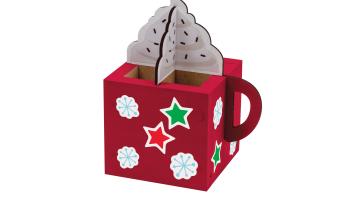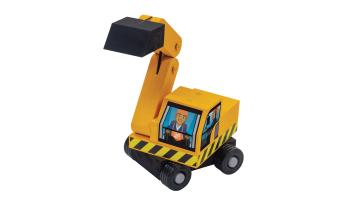Scientific Steps
Students who want to find out things as a scientist, will want to conduct a hands-on investigation. While scientists study a whole area of science, each investigation is focused on learning just one thing at a time. This is essential if the results are to be trusted by the entire science community.
Follow the Scientific Steps below to complete your scientific process for your chosen investigation, How does temperature affect the water uptake of celery plants?
- Research
What do scientists think they already know about the topic? What are the processes involved and how do they work? Background research can be gathered first hand from primary sources such as interviews with a teacher, scientist at a local university, or other person with specialized knowledge. Or use secondary sources such as books, magazines, journals, newspapers, online documents, or literature from non-profit organizations. Don’t forget to make a record of any resource used so that credit can be given in a bibliography.
- Hypothesis
After gathering background research, the next step is to formulate a hypothesis. More than a random guess, a hypothesis is a testable statement based on background knowledge, research, or scientific reason. A hypothesis states the anticipated cause and effect that may be observed during the investigation.
Consider the following hypothesis:
If ice is placed in a Styrofoam container, it will take longer to melt than if placed in a plastic or glass container. I think this is true because my research shows that a lot of people purchase Styrofoam coolers to keep drinks cool.The time it takes for ice to melt (dependent variable) depends on the type of container used (independent variable.). A hypothesis shows the relationship among variables in the investigation and often (but not always) uses the words if and then.
- Design Experiment
Once a hypothesis has been formulated, it is time to design a procedure to test it. A well-designed investigation contains procedures that take into account all of the factors that could impact the results of the investigation. These factors are called variables.
There are three types of variables to consider when designing the investigation procedure.
- The independent variable is the one variable the investigator chooses to change.
- Controlled variables are variables that are kept the same each time.
- The dependent variable is the variable that changes as a result of /or in response to the independent variable.
Step A – Clarify Variable
Clarify the variables involved in the investigation by developing a table such as the one below.
Testable Question What detergent removes stains the best? What is changed? (independent variable) Type of detergent, type of stain What stays the same? Type of cloth, physical process of stain removal Data Collected (dependent variable) Stain fading over time for combinations of detergents and stains Step B – List Materials
Make a list of materials that will be used in the investigation.Step C – List Steps
List the steps needed to carry out the investigation.Step D – Estimate Time
Estimate the time it will take to complete the investigation. Will the data be gathered in one sitting or over the course of several weeks?Step E – Check Work
Check the work. Ask someone else to read the procedure to make sure the steps are clear. Are there any steps missing? Double check the materials list to be sure all to the necessary materials are included. - Data Collection
After designing the experiment and gathering the materials, it is time to set up and to carry out the investigation.
When setting up the investigation, consider...
The Location Choose a low traffic area to reduce the risk of someone accidentally tampering with the investigation results—especially if the investigation lasts for several weeks. Safety Avoid harmful accidents by using safe practices.
- The use of construction tools or potentially harmful chemicals will require adult supervision.
- Locate the nearest sink or fire extinguisher as a safety precaution.
- Determine how to dispose of materials. For example, some chemicals should not be mixed together or put down a sink drain.
- Wear protective clothing such as goggles and gloves. Tie back loose hair so that it does not get caught on any of the equipment.
Documentation Making a rough sketch or recording notes of the investigation set up is helpful if the experiment is to be repeated in the future. Carrying out the investigation involves data collection. There are two types of data that may be collected—quantitative data and qualitative data.
Quantitative Data
- Uses numbers to describe the amount of something.
- Involves tools such as rulers, timers, graduated cylinders, etc.
- Uses standard metric units (For instance, meters and centimeters for length, grams for mass, and degrees Celsius for volume.
- May involve the use of a scale such as in the example below.
Qualitative Data
- Uses words to describe the data.
- Describes physical properties such as how something looks, feels, smells, tastes, or sounds.
As data is collected it can be organized into lists and tables. Organizing data will be helpful for identifying relationships later when making an analysis. Using technology, such as spreadsheets, to organize the data can make it easily accessible to add to and edit.
- Analyze Data
After data has been collected, the next step is to analyze it. The goal of data analysis is to determine if there is a relationship between the independent and dependent variables. In student terms, this is called “looking for patterns in the data.” Did the change I made have an effect that can be measured?
Recording data on a table or chart makes it much easier to observe relationships and trends. There are many observations that can be made when looking at a data table. Comparing mean average or median numbers of objects, observing trends of increasing or decreasing numbers, comparing modes or numbers of items that occur most frequently are just a few examples of quantitative analysis.
Besides analyzing data on tables or charts, graphs can be used to make a picture of the data. Graphing the data can often help make those relationships and trends easier to see. Graphs are called “pictures of data.” The important thing is that appropriate graphs are selected for the type of data. For example, bar graphs, pictographs, or circle graphs should be used to represent categorical data (sometimes called “side by side” data). Line plots are used to show numerical data. Line graphs should be used to show how data changes over time. Graphs can be drawn by hand using graph paper or generated on the computer from spreadsheets for students who are technically able.
These questions can help with analyzing data:
- What can be learned from looking at the data?
- How does the data relate to the student’s original hypothesis?
- Did what you changed (independent variable) cause changes in the results (dependent variable)?
- Draw Conclusions
After analyzing the data, the next step is to draw conclusions. Do not change the hypothesis if it does not match the findings.The accuracy of a hypothesis is NOT what constitutes a successful science fair investigation. Rather, Science Fair judges will want to see that the conclusions stated match the data that was collected.
Application of the Results: Students may want to include an application as part of their conclusion. For example, after investigating the effectiveness of different stain removers, a student might conclude that vinegar is just as effective at removing stains as are some commercial stain removers. As a result, the student might recommend that people use vinegar as a stain remover since it may be the more eco-friendly product.
In short, conclusions are written to answer the original testable question proposed at the beginning of the investigation. They also explain how the student used science process to develop an accurate answer.




